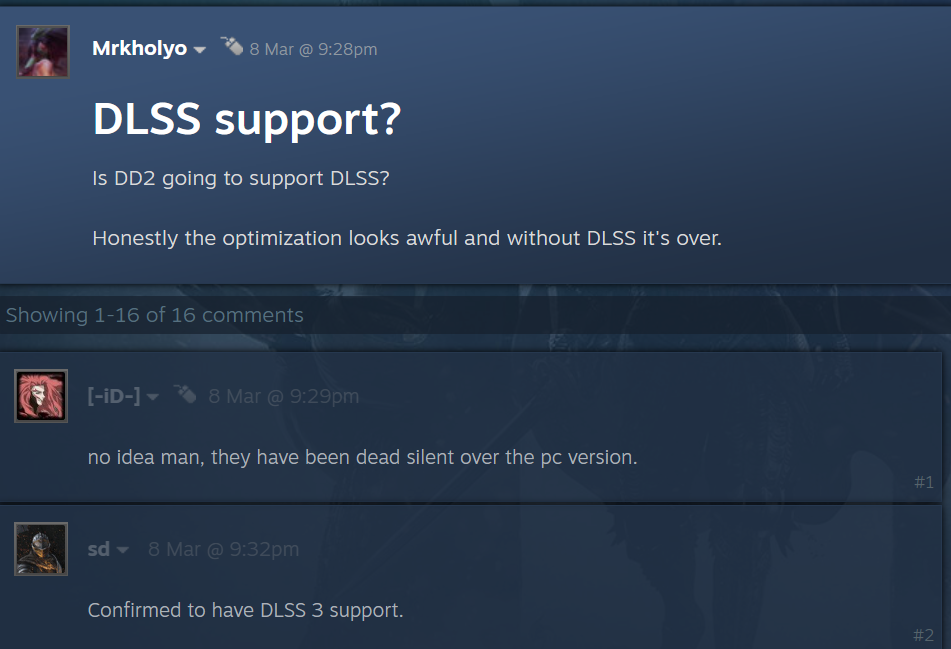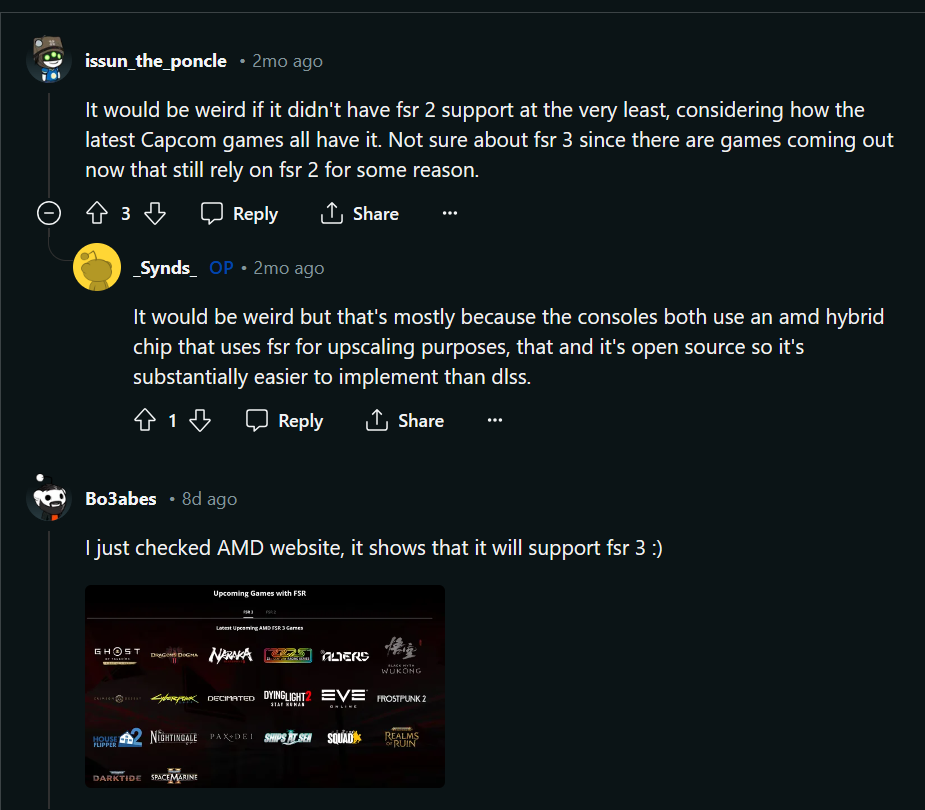HIGHLIGHTS
- DLSS currently is the primary technology used for Dragon’s Dogma 2.
- There is a significant need for FSR for players who do not have Nvidia’s RTX GPUs.
- Capcom is committed to offering DLSS 3 frame generation for RTX 40 series graphics cards in a future update.
Capcom, the Dragon’s Dogma 2 developer, has included the DLSS 3, not the FSR.
With the inclusion of DLSS, there’s a requirement for high-end GPUs, which may not be appropriate for gamers.
Gamers are encountering the issue of whether to choose AMD’s FSR or NVIDIA’s DLSS for better performance.
Integration Of The FSR And DLSS In Dragon’s Dogma 2
With the release of Dragons Dogma 2, gamers are encountering the choice of whether to choose AMD’s FSR vs. NVIDIA’s DLSS.
FSR stands for FidelityFX Super Resolution, while DLSS stands for Deep Learning Super Sampling.
DLSS utilizes deep learning algorithms and upscales lower-resolution images to higher resolutions, balancing image quality and frame rate.
Meanwhile, FSR upscales the resolution at which the main part of the frame is rendered, reducing the GPU’s workload.
In Dragon’s Dogma 2, DLSS significantly boosts performance, particularly for those with the latest RTX 40 series GPUs.
It increases by 20 to 30 frames per second, a significant uplift for smooth gameplay without compromising on visual detail.
However, the FSR is absent in Dragon’s Dogma 2, and if implemented, it improves frame rates, but at the cost of image clarity in Performance mode.

Difference In the Graphics Settings Between The FSR And DLSS
The graphics settings of DLSS Vs. FSR in Dragons Dogma 2 differ in upscaling and the technologies they utilize.
- DLSS upscales images using AI and machine learning; FSR uses a spatial upscaling algorithm without AI.
- DLSS requires RTX GPUs for AI processing; FSR uses hardware agnostic and works on a wide range of GPUs.
- DLSS has different modes like Quality, Balanced, Performance, and Ultra Performance; FSR has Ultra Quality, Quality, Balanced, and Performance
- DLSS provides a trade-off between image quality and performance; FSR affects the balance between image quality and frame rate.
- DLSS 3 is the latest version with frame-generation technology, while FSR 2.0 is the latest version with no frame-generation technology.
- DLSS 3 produces entire frames to insert between existing ones, significantly boosting performance; AMD is working on FSR 3.0 to add new features.
Need Of FSR In Dragon’s Dogma 2 To Enhance The Performance
If FSR in Dragon’s Dogma 2 is added, it will enhance the game’s performance on a wider range of hardware.
As FSR upscales lower-resolution images to higher resolutions, it becomes highly beneficial for gamers without the latest hardware.
As a result, players enjoy better graphics in the absence of a high-end GPU.
However, there is some discussion in the community about the support of FSR in Dragon’s Dogma 2.
A user on Reddit mentions that it would be odd if the game didn’t support at least FSR 2.0.
Another user confirmed that according to AMD’s website, Dragon’s Dogma 2 will support FSR 3.01.

Capcom Responses To The Addition Of FSR In Dragon’s Dogma 2
Capcom hasn’t stated anything about the addition of FSR in Dragon’s Dogma 2.
However, they have responded to feedback on performance issues and the Steam platform’s microtransactions.
They acknowledge the performance problems related to frame rate issues when numerous characters appear simultaneously.
Capcom may implement FSR to cater to a broader audience and ensure that the game is accessible to players with varying system specifications.
Capcom also confirms that they are ditching AMD’s FSR in favor of Nvidia’s DLSS for Dragon’s Dogma 2.
They are committed to offering DLSS 3 frame generation for RTX 40 series graphics cards in a future update.
This decision might change in future releases, but for now, DLSS seems to be the focus for enhancing the game’s performance.


